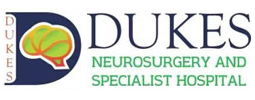Heartbeats and Healing: Exploring Cardiothoracic Excellence
The heart is more than just an organ; it’s the pulse of life. In the field of cardiothoracic medicine, where heartbeats and healing intersect, the focus is on delivering precision care that keeps this vital organ in rhythm. This comprehensive exploration of cardiothoracic excellence examines advanced techniques, innovative treatments, and personalized care approaches that are reshaping how we understand and treat heart and lung conditions.
What is Cardiothoracic Medicine?
Cardiothoracic medicine encompasses a range of conditions affecting the heart and lungs. This includes coronary artery disease, heart valve disorders, congenital heart defects, and lung cancer. It requires a multidisciplinary approach, combining surgical precision, innovative technology, and personalized care. Leading cardiothoracic centers have teams of experts who specialize in diagnosing, treating, and rehabilitating patients with these complex conditions.
The Importance of Accurate Diagnosis
Accurate diagnosis is the foundation of effective treatment. To achieve this, cardiothoracic specialists use advanced diagnostic tools like echocardiograms, cardiac MRI, and CT scans. According to the American Heart Association, these imaging techniques are critical for visualizing the heart’s structure and function1. This level of detail allows for precise treatment plans that lead to better outcomes.
Advanced Surgical Techniques in Cardiothoracic Care
When surgery is required, precision is key. Minimally invasive techniques, such as robotic-assisted surgery and video-assisted thoracic surgery (VATS), have transformed cardiothoracic care. These methods allow for smaller incisions, reduced pain, and quicker recovery times2. Open-heart surgeries, like coronary artery bypass grafting (CABG) and heart valve repairs, require exceptional skill and precision to ensure patient safety.
The Role of Innovation in Cardiothoracic Medicine
Innovation drives progress in cardiothoracic care. From the development of new surgical techniques to advances in regenerative medicine, the field is constantly evolving. Clinical trials and research studies contribute to this evolution, exploring new treatments that offer hope to patients. According to the Journal of Thoracic and Cardiovascular Surgery, ongoing research is expanding the possibilities for heart and lung health3.
Personalized Cardiac Rehabilitation
Cardiac rehabilitation is an essential component of cardiothoracic care. It involves exercise programs, nutritional guidance, stress management, and patient education. Personalized rehabilitation plans help patients recover and make lifestyle changes that promote long-term heart and lung health4. The American Heart Association emphasizes the importance of cardiac rehabilitation in reducing the risk of future heart events5.
Patient-Centered Approach
A patient-centered approach is at the heart of cardiothoracic excellence. Collaboration between patients and healthcare providers is crucial, as it fosters a sense of trust and empowerment. Patients need to understand their treatment options and be involved in decision-making. By providing clear communication and compassionate care, healthcare providers can help patients navigate the complexities of cardiothoracic conditions.
Conclusion
Cardiothoracic excellence is about more than just technology and surgical techniques; it’s about caring for the whole person. Through accurate diagnosis, advanced surgical methods, and personalized rehabilitation, the field is making significant strides in heart and lung health. By embracing innovation and maintaining a patient-centered focus, cardiothoracic care continues to improve outcomes and enhance the quality of life for patients.
IFootnotes
- “Cardiac Imaging,” American Heart Association. Link to source. ↩
- “Benefits of Minimally Invasive Surgery,” Mayo Clinic. Link to source. ↩
- “Cardiothoracic Research,” Journal of Thoracic and Cardiovascular Surgery. Link to source. ↩
- “Cardiac Rehabilitation,” Johns Hopkins Medicine. Link to source. ↩
- “Benefits of Cardiac Rehabilitation,” American Heart Association. Link to source. ↩



